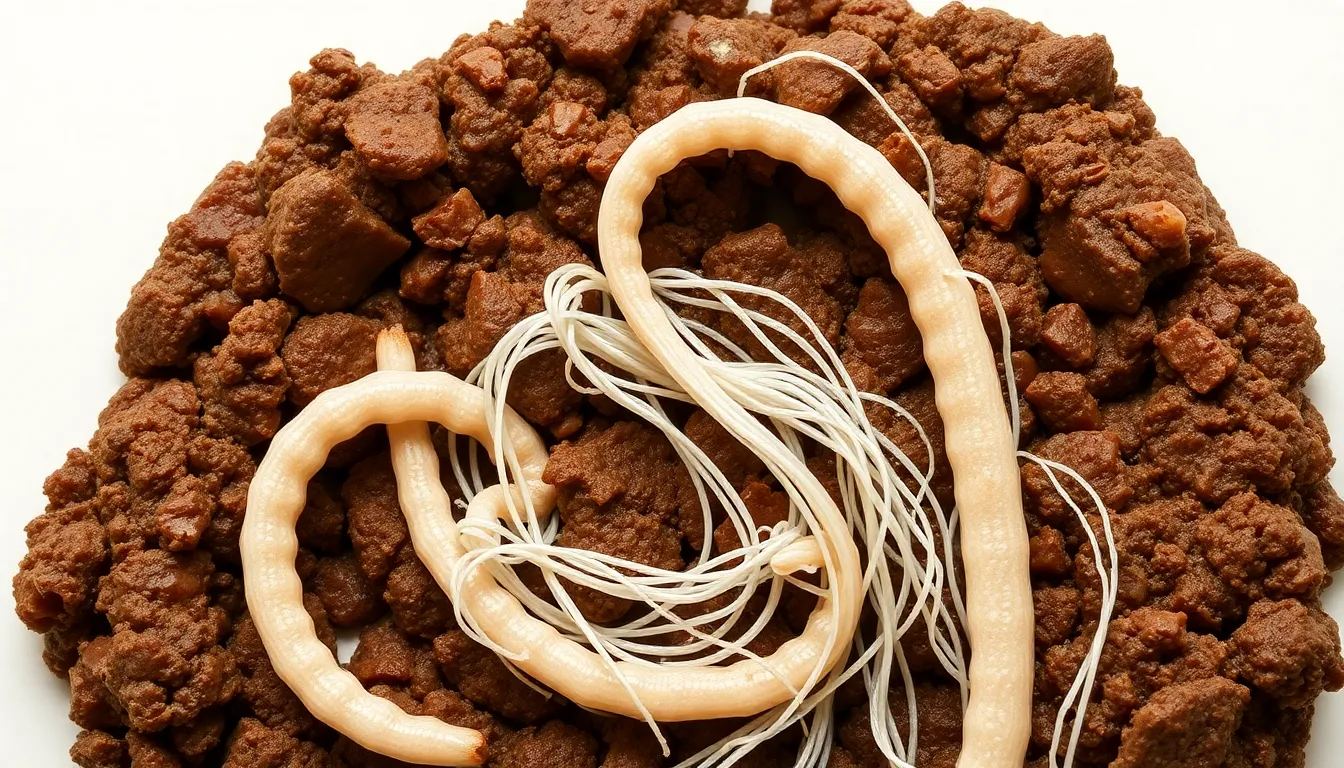Ever had a moment of panic when you spot something long and stringy in your poop? Don’t worry, it’s not a new pasta shape gone rogue! Those mysterious strands might just be tapeworms, the unwelcome guests in your digestive system. These sneaky parasites can turn your gut into their personal buffet, but they’re more common than you think.
Table of Contents
ToggleUnderstanding Tapeworms
Tapeworms are flat, segmented parasites that can live in the intestines, causing various health issues. They typically have a ribbon-like appearance, leading to their description as long, stringy things in stool.
What Are Tapeworms?
Tapeworms belong to the class Cestoda and can grow several feet in length. These organisms attach to the host’s intestinal wall using specialized hooks or suckers. Common types include the beef tapeworm and the pork tapeworm, each originating from contaminated food or water. Infections usually occur when a person consumes undercooked meat or contaminated food that contains tapeworm eggs or larvae.
Life Cycle of Tapeworms
The life cycle of tapeworms involves multiple stages. Eggs pass through feces into the environment, where they can infect intermediate hosts like cattle or pigs. After ingestion by a suitable host, the larvae develop into cysts within the tissues. When humans consume undercooked infected meat, the cysts mature into adult tapeworms in the intestines. Adult tapeworms reproduce, releasing more eggs into the feces, continuing the cycle.
Identifying Tapeworms in Feces

Identifying tapeworms in feces requires careful observation of the stool’s characteristics.
Characteristics of Tapeworms
Tapeworms typically manifest as long, stringy strands in feces, resembling pieces of white rice or flat ribbons. Segmented sections of the worm can often break off and appear individually. Adult tapeworms can grow several feet in length, showcasing a flat appearance that sets them apart from other parasites. Presence of these strands usually indicates that the host has an active infection. Identification of eggs may also occur, with tiny, rice-like segments found around the anus, which is another sign of infestation.
Other Possible Causes of Stringy Things
Stringy substances in feces may also result from other factors unrelated to tapeworms. Undigested food, particularly certain types of fruits or vegetables, can mimic the appearance of tapeworms. Fiber-rich diets occasionally produce long, fibrous stool remnants, leading to confusion. In some cases, certain medications or digestive disorders affect the appearance of feces. Therefore, observing the overall health condition and consulting a healthcare professional can provide clarity on the issue.
Health Implications
Tapeworm infections can lead to significant health issues. Understanding the symptoms and risks associated with these parasites is crucial for early identification and treatment.
Symptoms of Tapeworm Infection
Symptoms often vary among individuals. Many experience abdominal pain or discomfort. Diarrhea may occur, along with weight loss despite normal or increased eating. Some notice nausea, appetite fluctuations, or fatigue. Visible segments in stool may provide a clear indication of an infection. Others might find irritation or itching around the anus. Even in mild cases, people can display no symptoms, complicating diagnosis. Observing these signs can prompt visits to healthcare providers for necessary tests.
Risks Associated with Untreated Infections
Ignoring a tapeworm infection poses serious risks. Complications can include intestinal blockages, leading to severe discomfort and additional medical issues. Nutritional deficiencies can stem from the parasite absorbing vital nutrients. When left untreated, the infection may spread and affect other organs. Some species cause more severe conditions, such as cysticercosis, leading to neurological issues. Regular health assessments can mitigate these risks and promote timely interventions. Seeking treatment upon noticing symptoms protects overall health and prevents complications.
Treatment and Prevention
Several effective treatments exist for tapeworm infections, making it crucial to address the issue promptly. Medical professionals usually recommend specific antiparasitic medications to eliminate tapeworms from the body. Medications such as praziquantel or nitazoxanide typically prove effective in destroying these parasites. Dosage and duration of treatment may vary based on the individual’s age, weight, and the type of tapeworm involved. Regular follow-ups help ensure that the infection has been completely resolved.
Preventing tapeworm infections primarily involves practicing good hygiene and food safety. Cooking meat thoroughly kills potential tapeworm larvae, so consumers should always ensure meats reach safe internal temperatures. Washing hands before meals and after using the restroom can significantly reduce the risk of transmission. Additionally, avoiding raw or undercooked fish and purchasing meat from reputable sources help protect against infection. Pet owners should also maintain proper deworming schedules for their animals, as this further reduces the risk of spreading tapeworms.
Long, stringy things in poop can be concerning but understanding the potential causes is crucial. Tapeworms are a common parasite that can lead to significant health issues if left untreated. Recognizing the signs and symptoms early can make a difference in effective treatment.
Maintaining good hygiene and food safety practices is key to preventing infections. Regular check-ups with healthcare professionals can help ensure any issues are addressed promptly. By staying informed and vigilant about digestive health, individuals can safeguard themselves against the risks associated with these parasites.







